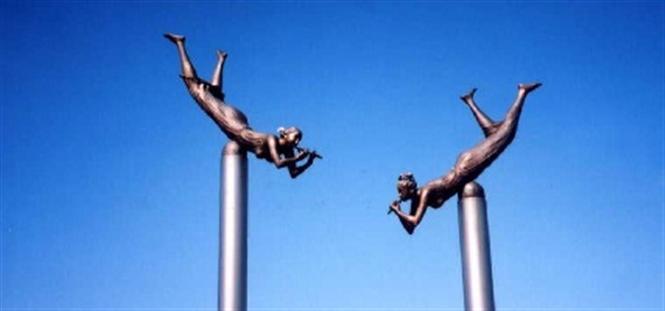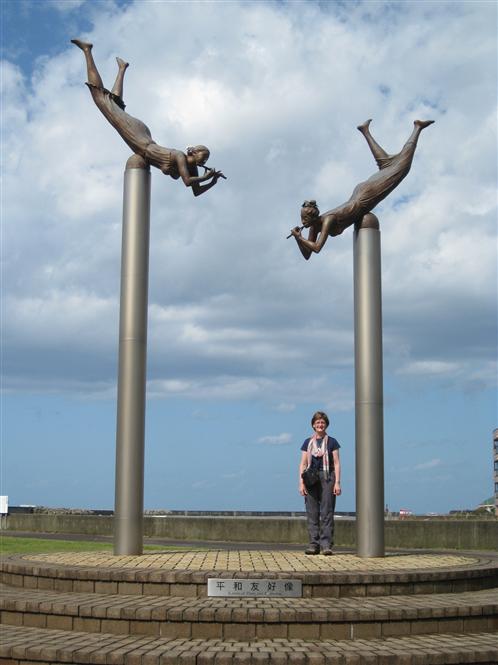Peace Memorial Park
Description
Atop two pillars are two angelic figures facing one another, forming a gateway. One is wearing eucalyptus leaves in her hair and the other is wearing cherry blossom leaves.
Photographs courtesy of Judy Quintal
History
During the Second World War, Japan had 91 POW camps holding thousands of Allied servicemen taken prisoner after the fall of Singapore. One of the most notorious was POW Camp 4-B, in Naoetsu, which opened in December 1942.
Arriving from Singapore aboard the 'Kamakura Maru’, were some 563 Australian soldiers‚ collectively known as C Force‚ most of them from the 2/20th Battalion. The men were sub-divided into two groups, 300 of them being sent to Naoetsu to work in the steel mill, carbide factory or unload ships, barges and trains (usually coal being shipped to the factories). Conditions were horrendous, one POW stating “of all the camps I was in, this was the worst in every respect”. To work in the factories, the men were forced to run about one mile each way and work up to 12 hour day or night shifts. Every 5 days they were forced to work 24 hours to enable a shift change. To unload coal from the ships, the men approached on barges and had to jump onto rope netting to climb aboard the ship, extremely dangerous in a big swell. Coal was carried on their backs in wicker baskets, weighing as much as 45kg, up a hill to waiting train cars. The walkway was a narrow wooden plank with a drop of about 1.5 metres either side. Along with the strenuous working conditions, the prisoners were subjected to frequent beatings for the slightest provocation, virtually non-existent medical care, starvation and scant clothing to protect them from the harsh Japanese winters. For nearly three years they endured brutality and deprivation. During the period between March 1943 and February 1944, 60 of the 300 Australian POWs died in captivity - more men per capita than at any other POW camp in Japan. After the war‚ eight guards were executed for their reign of terror at Naoetsu‚ a figure that is again more than for any other camp in Japan.
Construction Information
In 1988, at the former site of the Naoetsu prison camp, a memorial service was held for the sixty Australian POWs who had died there. Six years later a group of local Japanese people, who had heard this story, formed a committee which aimed to erect peace statues at Naoetsu. In spite of many obstacles they succeeded in transforming the site into a garden and erecting the statues and two cenotaphs, designed and created by a Japanese sculptor.
Location
Naoetsu, Japan.
On the west coast of Japan, the memorial park is located by the riverside. Naoetsu has now merged and become part of the city of Joetsu.



